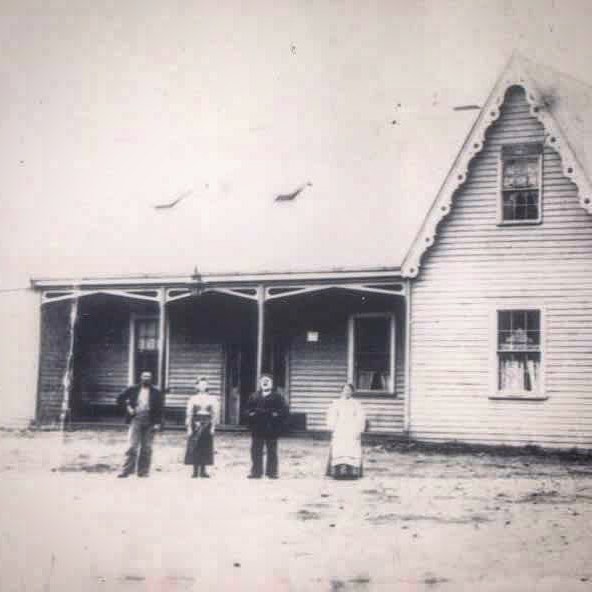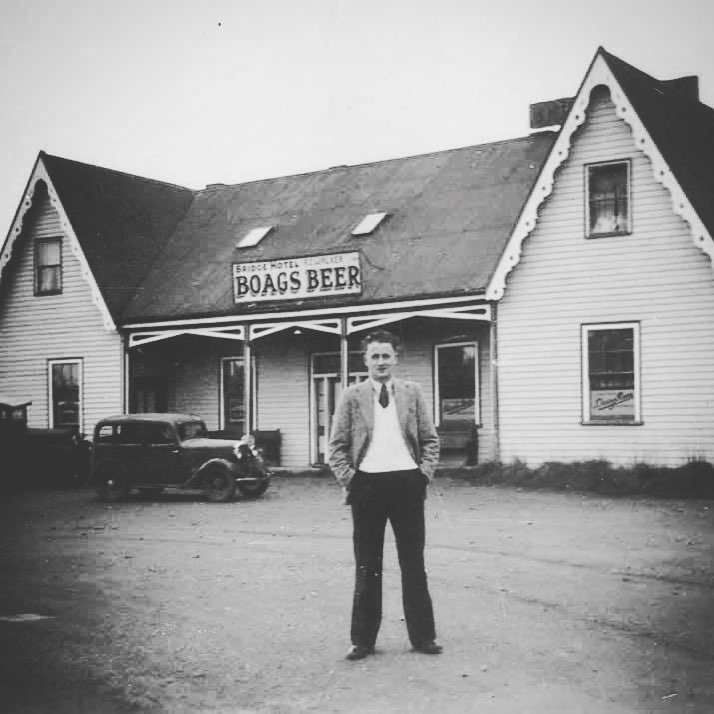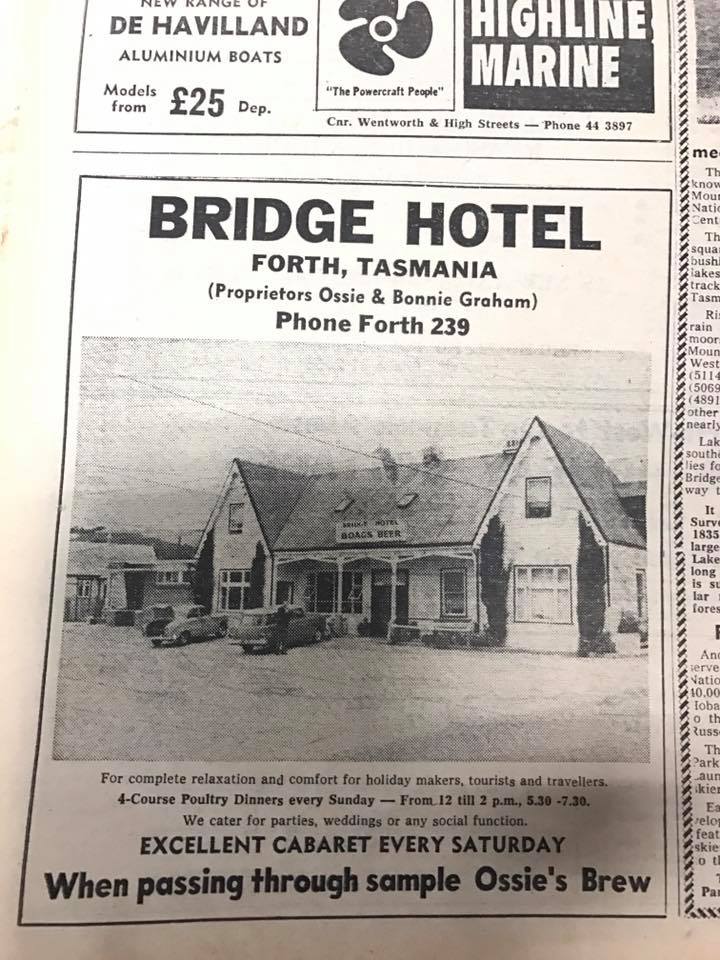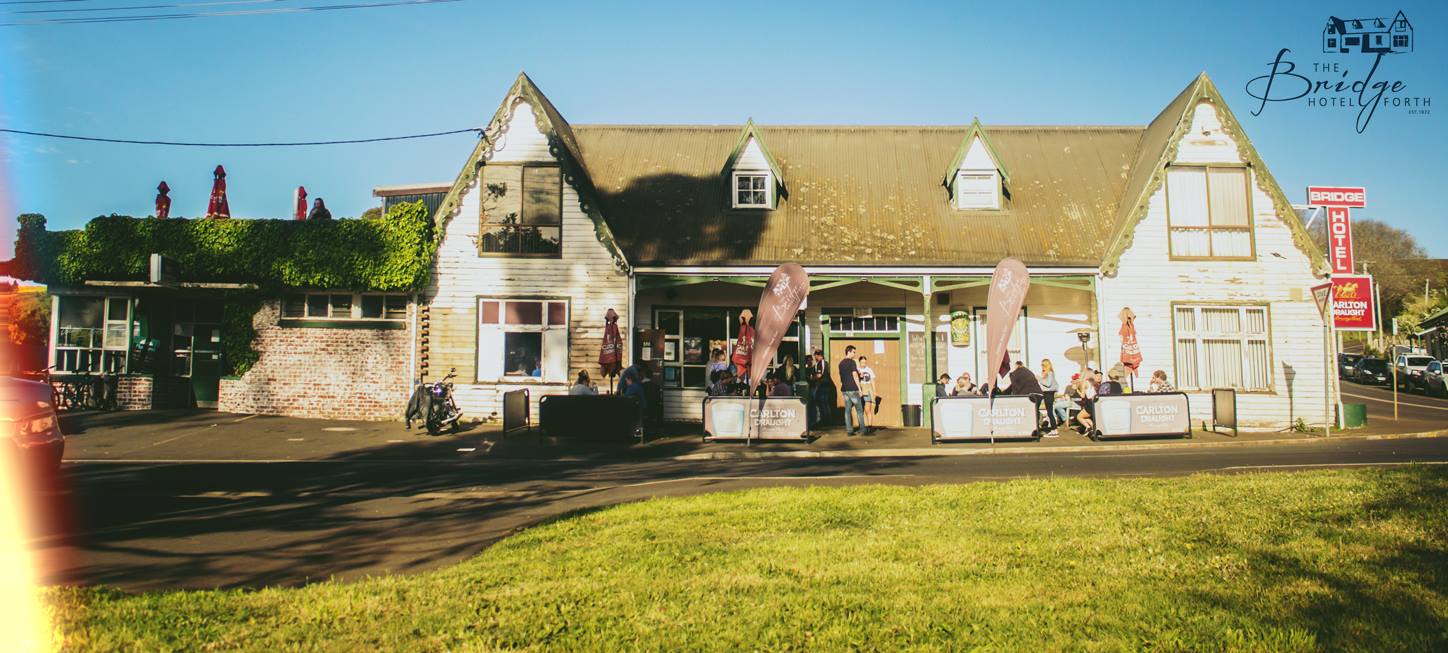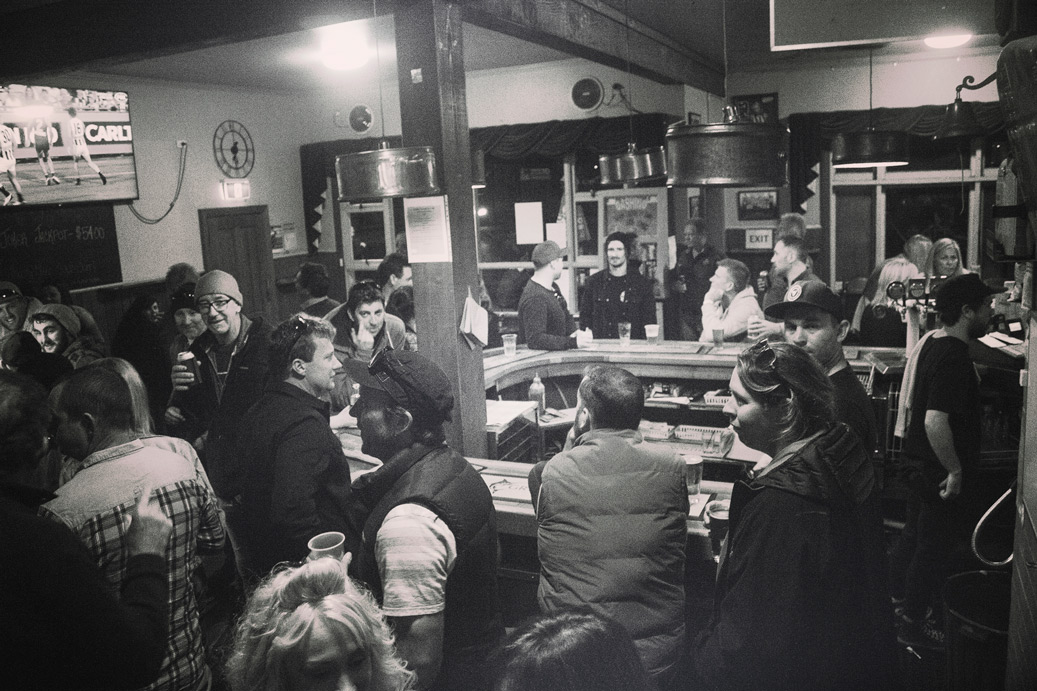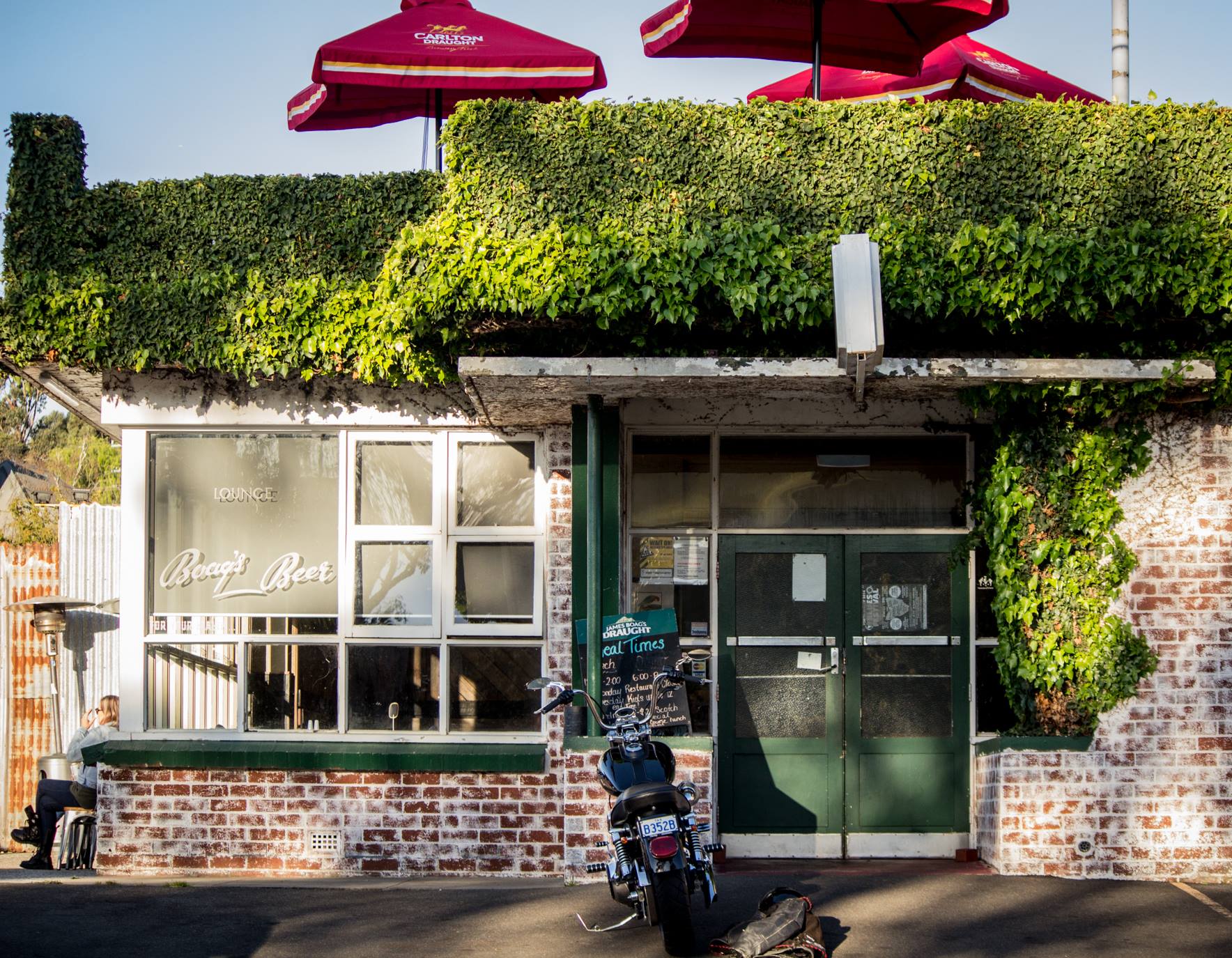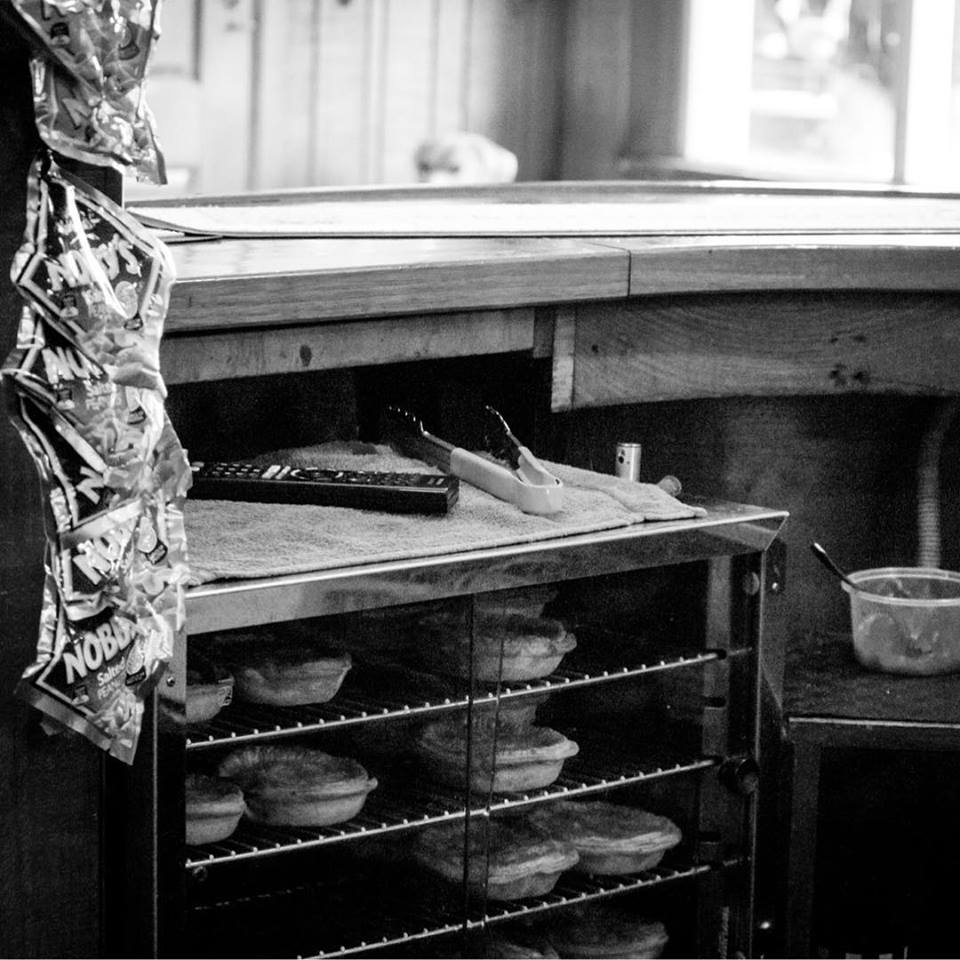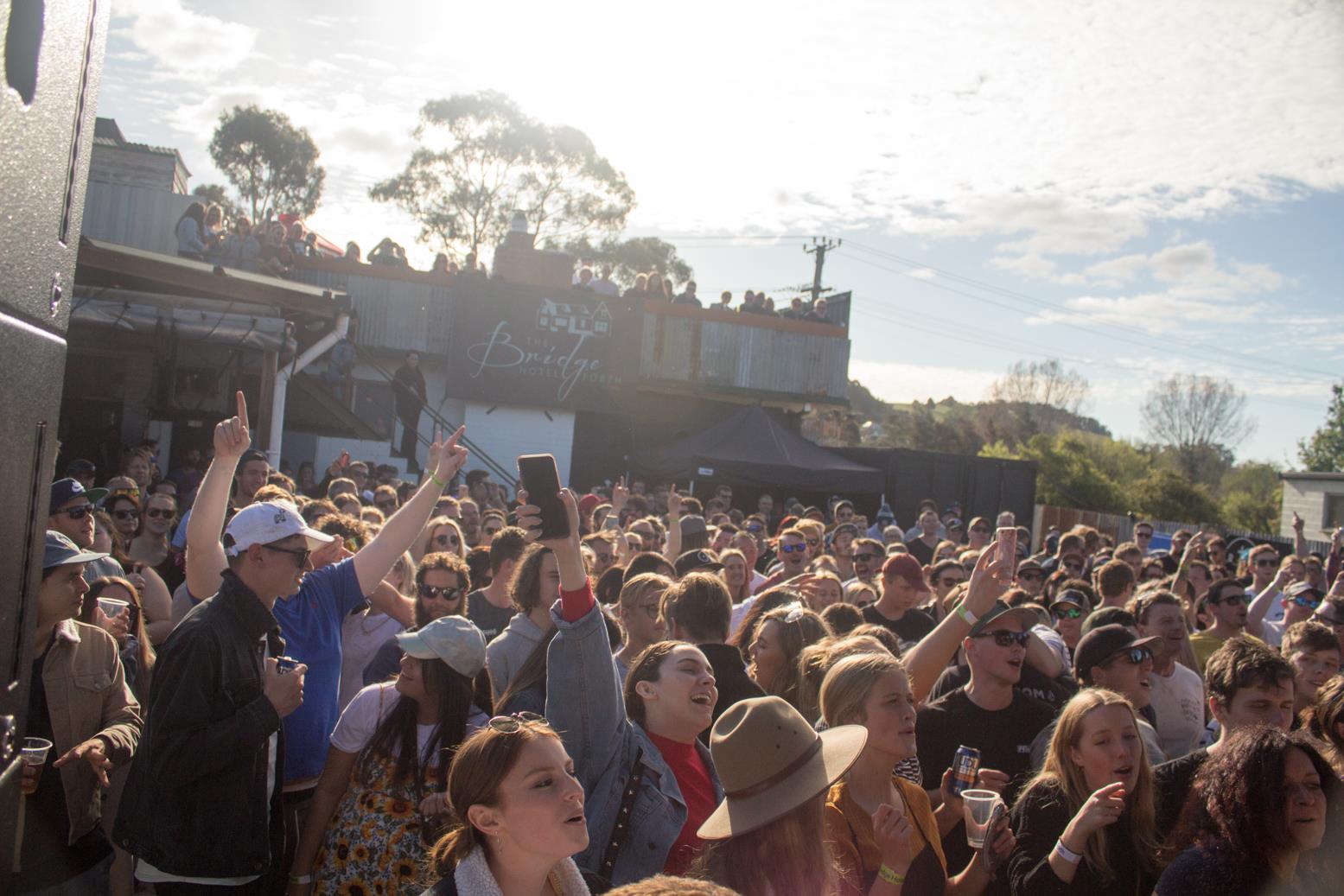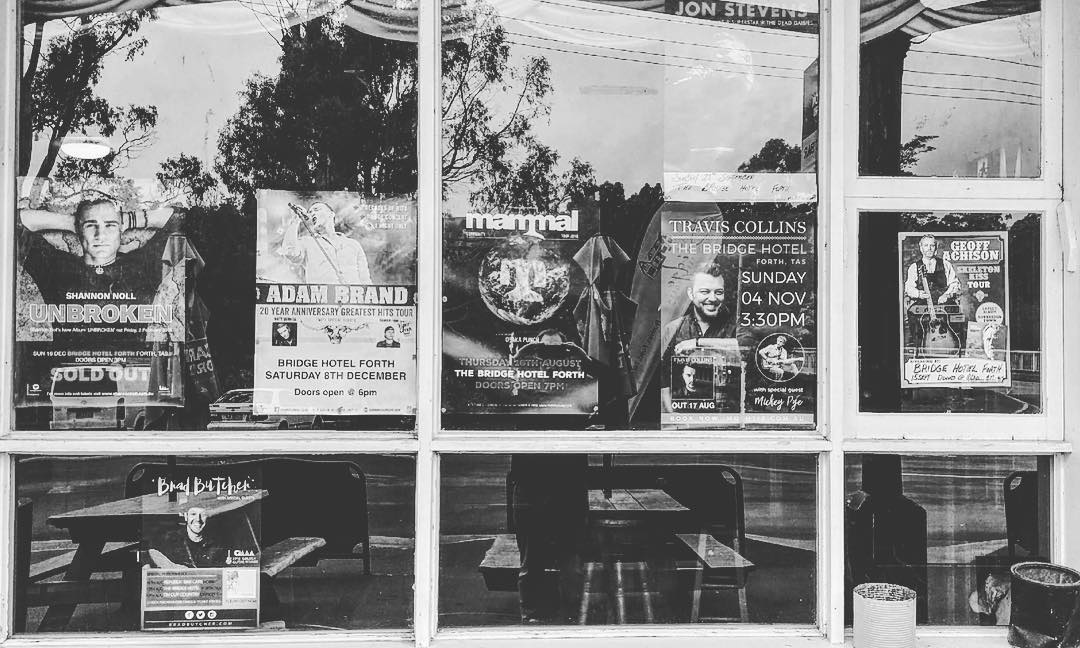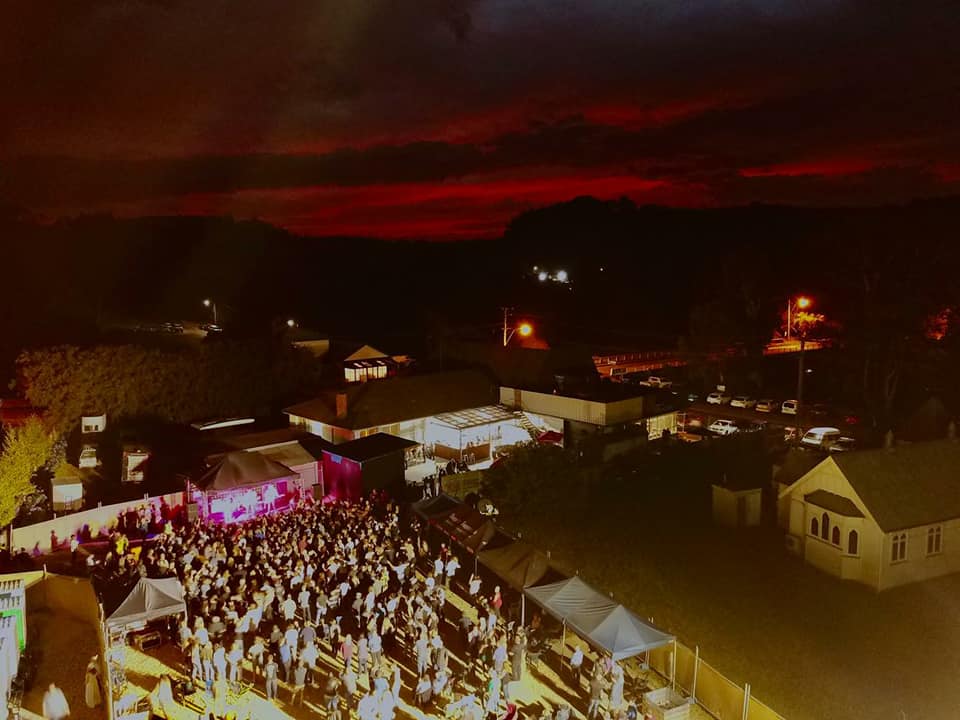HISTORY
In the early history of most towns in Tasmania there are engrossing legends and stories. One of our most engaging is the Bridge Hotel at Forth, which was the second settlement in the County of Devon in the 1840's. A visit to the historic Bridge Hotel is similar to opening a time capsule to a rich and relevant past. A window on the pub's past evokes memories that are a far cry from today's lifestyle and carries one back to an era when times were hard and a man was measured by his ability to work and his honesty.
The pub has remained with few changes, retaining its old world charm, appeal in character and structure as well as weathering the march of time, floods, fires and licensees through the years. It rests proudly on the eastern bank of the Forth River near the bridge on the old coastal highway. The front windows in the twin gable roofline appear unaltered since being built. The pub has witnessed the demise of most of Forth's oldest buildings. At the rear, the stables once required for travellers horses and carriages, have become garages and store sheds.
First licensed and opened in January 1872 by John F Liddle, the Bridge Hotel far exceeded the minimum standard of a country public house which was to consist of one sitting room, two sleeping rooms for guests, plus stables for four horses. The minimum standards usually did not involve a palatial building, but from its birth the hotel was exceptional. Early furniture was noted by Tasmanian Governor Weld in 1875 as being fine examples of Blackwood and local timbers built by Don River firm, Cummings and Raymond.
Licences in some respects were quite parallel to present day requirements. A licence would not be granted for instance unless the justices were satisfied about the character of the applicant, nature and suitability of the premises, the locality of the house and the necessity for a public house in the locality. John Liddle from the first day of opening provided good service to the community and travelling public and the hotel became the centre for meetings, inquests and special gatherings.
Some time after its opening, Liddle built a large brick home on the Kindred hill, the second brick house in Forth and he had the telephone, also a first for Forth, connected to the hotel in case he needed to be contacted urgently. Unfortunately, due to a road accident, Liddle was forced to sell the hotel in 1881 and returned to his home where later he passed away.
Competition for custom in these early times was from nearby rival hotel, Hamilton on Forth, but it was burnt down in November 1895 leaving the Bridge Hotel to satisfy the public. Liddle was succeeded for a short time by Mr C.A. King and a sale resulted in ownership by Alexander Gardiner, his wife Margaret and two children; Walter and Rhoda.
Gardiner was well known and owned rural properties in Kindred and was a prominent member of several local community organisations. An old newspaper report tells of Alexander's son, Walter riding home over the bridge when children waved their hats at the horse which bolted. Attempting to jump the hotel yard gate it missed, throwing young Master Gardiner heavily, resulting in a "broken left thigh and severe cuts". Accidents were common in the days of horses for personal transport.
The Forth River across the road from the hotel was the dominant feature of the valley and although the mouth was narrow at the sea, Forth was one of the busiest shipping ports with small ships and punts coming up to a shipping shed at high tide opposite the hotel. It was a common sight to see many produce boats lined up at the wharf and the main clientele of the hotel were rough, tough seamen, true characters of the era. They shared the bar with the timber cutters who were clearing the heavy forests and shipping timber to the mainland to meet earliest settlers requirements in rapidly developing towns and mining centres. Farmers were occasional patrons as they had little money to spare, struggling to survive, while clearing the forest for the plough. Later road workers would slake their thirst when road building began in earnest. The community frowned on these itinerant workers as they toiled by day, were drunk by night, some sleeping where they fell.
River transport in these times was often faster as the roads were impassable. In winter they were a quagmire and rough broken dustbowls in summer. Mail arrived daily, in all weather with a rider on horseback with two packhorses passing further along the coast.
The hotel was the meeting place for the hunt club's departure and provided drinks and refreshments at the end of the meet to wash away the dust and to furnish comfortable surroundings for yarns of the hunt, horses and dogs. Local bands played for special events under an aged, extensive gum tree on the river bank standing as a sentinel overlooking the hotel for many decades.
The hotel was also known as “"Liddles Hotel (Forth Tavern)” and was consecrated as the Freemason’s Lodge of Peace in November 1879, before moving to Odd Fellows Hall up the hill.
For the 1879 parliamentary elections, the hotel was the polling booth and saw riotous behaviour when Edward Braddon was elected to the House of Assembly to Represent West Devon. Police were present with guns to quell the riot when fights using sticks and stones as weapons were used, even by some women. The melee was finally settled with drinks all round.
Business for the hotel was generated by the annual exhibition of the Devon Agricultural Society which was held in Forth as well as the Annual Forth Ball, the event of the season. Dancers from afar considered it an honour to be invited. Travelling was with horses and guests came from as far away as Deloraine. It was a leisurely outing "one day for the trip, the next for the ball preparations and attendance, the third for recovering after festivities and the fourth for returning home".
Advertisements for the hotel listed: "good accommodation, bottle business cut to bedrock, best fishing in Tasmania, moderate charges, splendid drives, horses and traps for hire and the River Forth within thirty yards of the door".
As time advanced roads improved, the population in the village grew, travellers to Cradle Mountain or the coast patronised the hotel, enjoying services and old world charm.
Stories of a spectral figure of a woman became common knowledge at the turn of the twentieth century and past occupants spoke of a grief stricken woman clad in white, possibly wearing wedding attire, standing at the upstairs dormer windows. She was purported to stand gazing across the bridge waiting for her bridegroom who had promised to return in time for their wedding. Little is known of their identities or what happened to the intended bridegroom. This apparition is a friendly resident ghost and is believed to inhabit the upstairs section of the hotel and is perhaps responsible for the unexplained footsteps and ghostly figure in the hallway late at night.
The hotel's tranquillity was disturbed in October 1950 when the licensee, Mrs Kathleen Hodgson awoke to discover a daring early morning robbery had meant the loss of takings from the safe, but village life soon resumed and the Bridge Hotel fell back into its quiet ambience.
In 1972 to celebrate the first centenary the proprietor, Ernest Morrison carried out internal renovations and Wilmot artist, Mr. Scherlitz was commissioned to paint a hotel replica in oils, which in due course was hung over the bar. The centenary was an auspicious and disquietening time. Fire ravaged the upper storey in September. Morrison saved the lives of two guests and the fire brigade extinguished the fire. Bar trade resumed within two days, but repairs were to come later.
A week later Em Morrison's golden Labrador named, 'Hey You', was poisoned in his kennel, after which Ernie was shot and killed. Papers from the hotel safe were recovered from a rabbit burrow on a nearby property, but the takings were missing. A man was later sentenced to prison for the term of his natural life.
Memories of these catastrophes from years ago remain and it is said that in the cover of night when all are tucked tightly in bed, another ghostly visitor takes the opportunity to roam the upper storey;Some have sensed a friendly invisible presence, unexplained incidents of objects moving, doors closing, soft footsteps, dog whines, but on investigation nothing is found. Are spectres from the past still waiting?
This sad and dark history of the hotel has been immortalised in the song 'The River Ran Red' (lyrics), by renowned blues artist Brian Fraser, and recorded on his album ' Don't Ask Me'. Brian Fraser wrote the song, after a nights stay in the hotel's accommodation.
The pub is known for being the founders of the Forth Valley Blues Festival.
The Bridge Hotel at Forth is heritage listed.
PRESS
Australia's best pubs revealed
IN A new book, Lee Mylne looks at what makes a local drinking hole an attraction for tourists.
Bridge Hotel, Tasmania
A ghostly jilted bride, tales of murder, fires, flood and more for such a quiet and peaceful spot, the Bridge Hotel at Forth has seen and survived a lot.
Established in 1872, the hotel has been a favourite meeting place for all types and is a good stopping point between Devonport and Cradle Mountain on the old coastal highway. Set on the banks of the lovely Forth River, it also has a reputation as one of Tasmania's top live music venues. And then there are its famous meat pies.
MARCH 12, 2012 , NEWS.COM.AU
Take a Detour to Find Tassie’s Finest Country Pubs
Bridge Hotel
This riverside pub on Tasmania’s north-west coast offers live music every Sunday afternoon but it’s the annual Forth Valley Blues Festival in March that really pulls in the crowds.
NOVEMBER 01, 2017, QANTAS MAGAZINE


